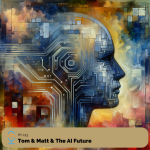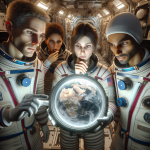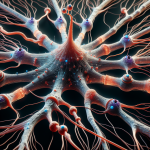
Rachel Cossar & Virtual Sapiens
Summary
In this conversation, Rachel Cossar shares her unique journey from being a competitive gymnast to a professional ballet dancer, and eventually transitioning into a new career. The discussion explores the challenges of identity and purpose after leaving a demanding athletic career, the evolution of athleticism in sports, and the importance of presence in personal and professional settings. Rachel reflects on how her past experiences have shaped her current work and the skills she brings to the table. In this conversation, Rachel Cossar discusses the importance of nonverbal communication in both physical and virtual settings. She emphasizes how body language and posture can influence perceptions in the workplace, especially in remote environments. The discussion also touches on the role of technology in coaching and how AI can help in understanding and improving communication skills. Rachel shares insights on creating authentic connections through intentional backgrounds and the significance of being aware of one’s physical presence during virtual interactions. In this conversation, the speakers delve into the nuances of communication, feedback, and the role of AI in enhancing presentation skills. They discuss the importance of understanding cultural differences in feedback, the significance of facial expressions in video communication, and how AI can serve as a personal coach for individuals looking to improve their communication skills. The conversation also touches on the practical applications of this technology in professional settings, such as leadership development and onboarding, and explores future opportunities for growth and collaboration in the field.
Takeaways
- Rachel’s journey is atypical, transitioning from gymnastics to ballet.
- The importance of access to good coaching in sports.
- Athleticism has evolved, with modern athletes pushing boundaries.
- Leaving ballet led to an identity crisis for Rachel.
- Presence and body awareness are crucial in professional settings.
- Rachel’s ballet experience provided unexpected leadership skills.
- The transition from dancer to a corporate environment was humbling.
- Maintaining a strong resume can open doors in new careers.
- Finding relevance in past experiences is essential for growth.
- The conversation highlights the mental health aspects of career transitions. Nonverbal communication is crucial in both physical and virtual settings.
- Posture and body language can significantly affect how others perceive you.
- Creating an intentional background can foster authentic connections during virtual meetings.
- AI can serve as a tool to reflect and improve communication skills.
- Understanding the difference between perceived and felt emotions is key in communication.
- The pandemic has shifted the way we approach coaching and communication training.
- It’s important to be aware of how your physical presence impacts your interactions.
- Virtual backgrounds can sometimes hinder genuine connection if not used thoughtfully.
- Feedback from AI should be presented carefully to avoid misinterpretation.
- Scaling coaching through technology can enhance accessibility and effectiveness. Feedback should be constructive and data-driven, not personal.
- Cultural differences affect how feedback is received and interpreted.
- Facial expressions play a crucial role in video communication.
- AI can provide personalized coaching for communication skills.
- Improvement in communication skills takes time and practice.
- The technology can be tailored for various professional applications.
- Leadership development programs benefit significantly from this technology.
- Onboarding new hires can be enhanced through effective communication training.
- Understanding audience engagement is key to effective presentations.
- The future of communication technology is promising with many opportunities for growth.
Chapters
00:00 Introduction and Halloween Reflections
03:12 Rachel’s Journey in Gymnastics and Dance
05:59 The Evolution of Athleticism in Sports
09:03 Transitioning from Dance to a New Career
12:02 The Struggles of Identity After Ballet
14:53 Finding Relevance in Past Experiences
20:26 The Intersection of Nonverbal Communication and Business
23:22 The Physicality of Virtual Interactions
27:10 Creating Authentic Connections in a Virtual World
31:21 Scaling Coaching Through Technology
36:14 Understanding Nonverbal Cues in Communication
44:54 Understanding Feedback and Perception
49:15 The Role of AI in Communication Coaching
56:50 Applications of Technology in Professional Development
01:01:30 Future Directions and Opportunities for Growth
Podcast: Play in new window | Download








